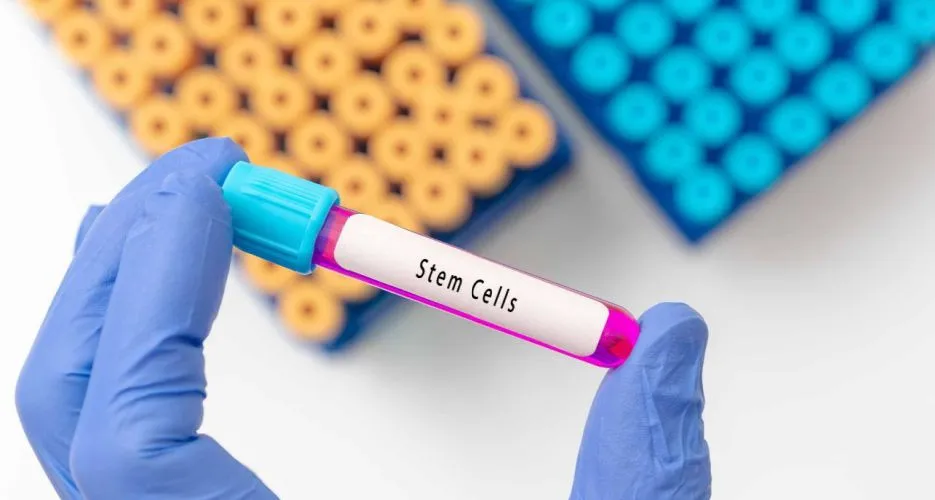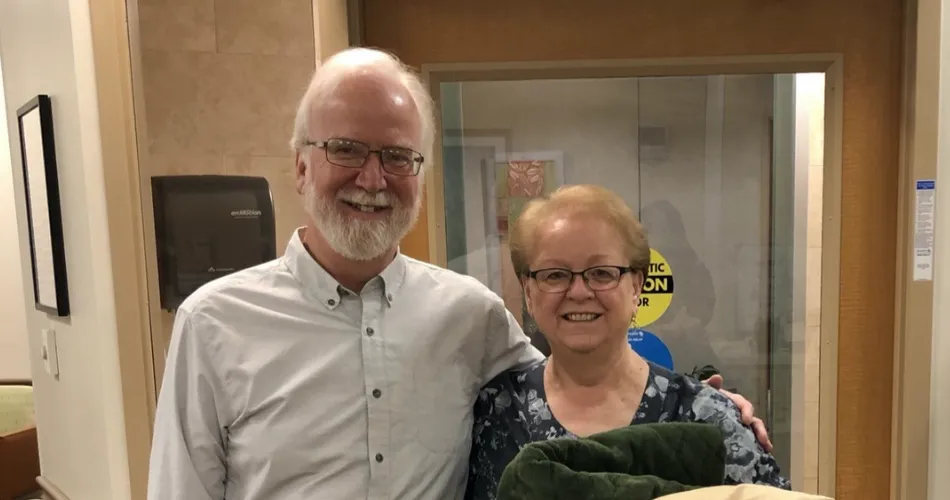The Future of Precision Medicine for Myeloma

In a recent multiple myeloma webinar, we discussed standard and high-risk multiple myeloma. One of the questions that was asked was "Should I, as a high-risk patient, be nervous about my future outcome?"
Dr. Attaya Suvannasankha answered the question expertly, explaining to the patient that while in research, general outcomes of high-risk myeloma patients are poorer than standard-risk myeloma outcomes, it's important to recognize that that does not determine an individual's risk.
Input and treatment from a multiple myeloma specialist, along with better diagnostic tools, can make that prediction on an individual basis easier to understand.
Most methods of predicting myeloma patient outcomes are based on probabilities and averages, not on an individual basis. Some of these methods aren't very precise, leaving a lot of room for uncertainty and error when it comes to assessing an individual's risk or outcomes. This can be frustrating for myeloma patients considered to be high-risk, like the one who asked the question in our webinar, or even those who are considered to be standard-risk but are looking for straight answers, individuals who are worried about their prognosis and the likelihood of responding to certain medications.
The Need for Better Myeloma Outcome Predictions
Dr. Ola Landgren, a renowned multiple myeloma specialist, along with a team of researchers at Sylvester Comprehensive Cancer Center in Miami and collaborating institutions, has unveiled a new computational model that aims to reduce the uncertainty of the future for newly diagnosed multiple myeloma patients. Dr. Landgren knows firsthand the need for better diagnostic tools in multiple myeloma and wasn't going to wait around for someone else to solve the problem.
The research team released information about the computational model in a Journal of Clinical Oncology publication, revealing it to be the first to predict an individual’s personalized prognosis based on the patient’s myeloma genomics and their treatments.
The number of treatments available to myeloma patients has increased substantially in the past two decades, great news in terms of longevity of patient lives and quality of life, but the higher number of treatments and combinations complicates decision-making for myeloma specialists or oncologists and the patients as they decide next treatment options.
Instead of playing a guessing game, or Russian roulette of which treatment might be best, it would be ideal for myeloma physicians to have the tools necessary to decide which treatment will work best for patients on an individual level- a diagnostic tool that gives clinicians a better idea whether or not a treatment will succeed or fail.
Rachel Tompa, Ph.D., published more about this new model on the University of Miami Miller School of Medicine site. She quotes Dr. Landgren, senior author on the Journal of Clinical Oncology publication, saying,
“The future of the field will have to be focused on precision medicine...there’s no other way forward.”
How Precision Medicine in Myeloma Can Become a Reality
So what exactly does the new model consist of, and how could it help influence precision (individual-based) medicine in multiple myeloma?
The Sylvester Comprehensive Cancer Center team of researchers used clinical data (including disease genetics and their treatments) from around 2,000 newly diagnosed myeloma patients. They then looked into the patient's DNA, identifying 90 "driver genes" that host the mutations in the cancer cells that appear to stimulate myeloma growth.
Then, they analyzed the treatments and subsequent outcomes of each patient within their dataset and matched the success of treatment outcomes to the patient's myeloma genetic sequences.
The results? The IRMMa [Individual Risk Model for Myeloma] tool does a better job at predicting myeloma outcomes than all other previous prognostic or prediction tools based on its ability to deep dive into an individual's story/data instead of making a general prediction based on a group of people.
This tool can also learn and improve the more data it receives, allowing emerging data with future treatment strategies to be added. Researchers continue to improve the tool and its accuracy.
Dr. Landgren and his team wanted to supply the tool with a large number of individual patient datasets in order to improve the accuracy of their diagnostic tool, so they collaborated with several other myeloma-specialized institutions such as Memorial Sloan Kettering Cancer Center, NYU Langone Health, Moffitt Cancer Center and Heidelberg University Hospital to collect anonymous patient data.
While the model is available online for anyone to use, its current abilities are more likely to appeal to researchers than to physicians themselves. The tool, as mentioned earlier, continues to be improved.
Tompa shares in her article a quote from Dr. Francesco Maura, an investigator contributing to this groundbreaking tool,
“This model can only grow with the help of the research community...the next challenge is to keep feeding it with the right datasets so at a certain point, it will be usable for clinical purposes.”
How This Tool Can Improve Myeloma Research
IRMMa takes into account the biology of the individual's myeloma, which can be highly variable and is extremely important to distinguish. In their investigation and development of this tool, IRMMa actually found 12 distinct subtypes of myeloma that hadn't been made before.
Tompa's article shares, "The original method for classifying multiple myeloma was based on staging for solid tumors and developed in the 1970s. This method relied on the amount of cancer present — more cancer in the body meant a worse prognosis. This type of staging and testing was accurate at the time, but has since become outdated.
When considering the influence of emerging therapies, especially immunotherapies, the amount fo myeloma is often less important than the nature of the cancerous cells. Different kinds of driver mutations in the tumor genome affect the cancer’s growth, so certain subtypes of myeloma could have a very good outcome even if they’re diagnosed when the cancer is widespread, assuming the right treatment is matched to the patient.
Remember, all the current myeloma prediction and diagnostic tools rely on averages of a population, lumping patients into groups like “standard risk” and “high risk” and giving prognoses for those groups overall that didn’t take into account individualized risk and how this can be modified by distinct treatments. This can cause panic among patient populations and their loved ones, and be less than optimal for physicians trying to make life-saving decisions.
The importance of this tool in the future of multiple myeloma testing and treatment cannot be overstated. The hard work and inspiration of Dr. Langdren and his team will surely be improved and duplicated as time goes on, making myeloma predictions on an individual basis and precision medicine a reality for myeloma patients of today and tomorrow.
In a recent multiple myeloma webinar, we discussed standard and high-risk multiple myeloma. One of the questions that was asked was "Should I, as a high-risk patient, be nervous about my future outcome?"
Dr. Attaya Suvannasankha answered the question expertly, explaining to the patient that while in research, general outcomes of high-risk myeloma patients are poorer than standard-risk myeloma outcomes, it's important to recognize that that does not determine an individual's risk.
Input and treatment from a multiple myeloma specialist, along with better diagnostic tools, can make that prediction on an individual basis easier to understand.
Most methods of predicting myeloma patient outcomes are based on probabilities and averages, not on an individual basis. Some of these methods aren't very precise, leaving a lot of room for uncertainty and error when it comes to assessing an individual's risk or outcomes. This can be frustrating for myeloma patients considered to be high-risk, like the one who asked the question in our webinar, or even those who are considered to be standard-risk but are looking for straight answers, individuals who are worried about their prognosis and the likelihood of responding to certain medications.
The Need for Better Myeloma Outcome Predictions
Dr. Ola Landgren, a renowned multiple myeloma specialist, along with a team of researchers at Sylvester Comprehensive Cancer Center in Miami and collaborating institutions, has unveiled a new computational model that aims to reduce the uncertainty of the future for newly diagnosed multiple myeloma patients. Dr. Landgren knows firsthand the need for better diagnostic tools in multiple myeloma and wasn't going to wait around for someone else to solve the problem.
The research team released information about the computational model in a Journal of Clinical Oncology publication, revealing it to be the first to predict an individual’s personalized prognosis based on the patient’s myeloma genomics and their treatments.
The number of treatments available to myeloma patients has increased substantially in the past two decades, great news in terms of longevity of patient lives and quality of life, but the higher number of treatments and combinations complicates decision-making for myeloma specialists or oncologists and the patients as they decide next treatment options.
Instead of playing a guessing game, or Russian roulette of which treatment might be best, it would be ideal for myeloma physicians to have the tools necessary to decide which treatment will work best for patients on an individual level- a diagnostic tool that gives clinicians a better idea whether or not a treatment will succeed or fail.
Rachel Tompa, Ph.D., published more about this new model on the University of Miami Miller School of Medicine site. She quotes Dr. Landgren, senior author on the Journal of Clinical Oncology publication, saying,
“The future of the field will have to be focused on precision medicine...there’s no other way forward.”
How Precision Medicine in Myeloma Can Become a Reality
So what exactly does the new model consist of, and how could it help influence precision (individual-based) medicine in multiple myeloma?
The Sylvester Comprehensive Cancer Center team of researchers used clinical data (including disease genetics and their treatments) from around 2,000 newly diagnosed myeloma patients. They then looked into the patient's DNA, identifying 90 "driver genes" that host the mutations in the cancer cells that appear to stimulate myeloma growth.
Then, they analyzed the treatments and subsequent outcomes of each patient within their dataset and matched the success of treatment outcomes to the patient's myeloma genetic sequences.
The results? The IRMMa [Individual Risk Model for Myeloma] tool does a better job at predicting myeloma outcomes than all other previous prognostic or prediction tools based on its ability to deep dive into an individual's story/data instead of making a general prediction based on a group of people.
This tool can also learn and improve the more data it receives, allowing emerging data with future treatment strategies to be added. Researchers continue to improve the tool and its accuracy.
Dr. Landgren and his team wanted to supply the tool with a large number of individual patient datasets in order to improve the accuracy of their diagnostic tool, so they collaborated with several other myeloma-specialized institutions such as Memorial Sloan Kettering Cancer Center, NYU Langone Health, Moffitt Cancer Center and Heidelberg University Hospital to collect anonymous patient data.
While the model is available online for anyone to use, its current abilities are more likely to appeal to researchers than to physicians themselves. The tool, as mentioned earlier, continues to be improved.
Tompa shares in her article a quote from Dr. Francesco Maura, an investigator contributing to this groundbreaking tool,
“This model can only grow with the help of the research community...the next challenge is to keep feeding it with the right datasets so at a certain point, it will be usable for clinical purposes.”
How This Tool Can Improve Myeloma Research
IRMMa takes into account the biology of the individual's myeloma, which can be highly variable and is extremely important to distinguish. In their investigation and development of this tool, IRMMa actually found 12 distinct subtypes of myeloma that hadn't been made before.
Tompa's article shares, "The original method for classifying multiple myeloma was based on staging for solid tumors and developed in the 1970s. This method relied on the amount of cancer present — more cancer in the body meant a worse prognosis. This type of staging and testing was accurate at the time, but has since become outdated.
When considering the influence of emerging therapies, especially immunotherapies, the amount fo myeloma is often less important than the nature of the cancerous cells. Different kinds of driver mutations in the tumor genome affect the cancer’s growth, so certain subtypes of myeloma could have a very good outcome even if they’re diagnosed when the cancer is widespread, assuming the right treatment is matched to the patient.
Remember, all the current myeloma prediction and diagnostic tools rely on averages of a population, lumping patients into groups like “standard risk” and “high risk” and giving prognoses for those groups overall that didn’t take into account individualized risk and how this can be modified by distinct treatments. This can cause panic among patient populations and their loved ones, and be less than optimal for physicians trying to make life-saving decisions.
The importance of this tool in the future of multiple myeloma testing and treatment cannot be overstated. The hard work and inspiration of Dr. Langdren and his team will surely be improved and duplicated as time goes on, making myeloma predictions on an individual basis and precision medicine a reality for myeloma patients of today and tomorrow.

about the author
Audrey Burton-Bethke
Audrey is a content writer and editor for the HealthTree Foundation. She originally joined the HealthTree Foundation in 2020. Audrey loves spending time with her supportive husband, energetic four-year-old, and new baby.
More on Treatment Advances
Trending Articles
Upcoming Events




Get the Latest Multiple Myeloma Updates, Delivered to You.
By subscribing to the HealthTree newsletter, you'll receive the latest research, treatment updates, and expert insights to help you navigate your health.
Together we care.
Together we cure.
3x Faster.













